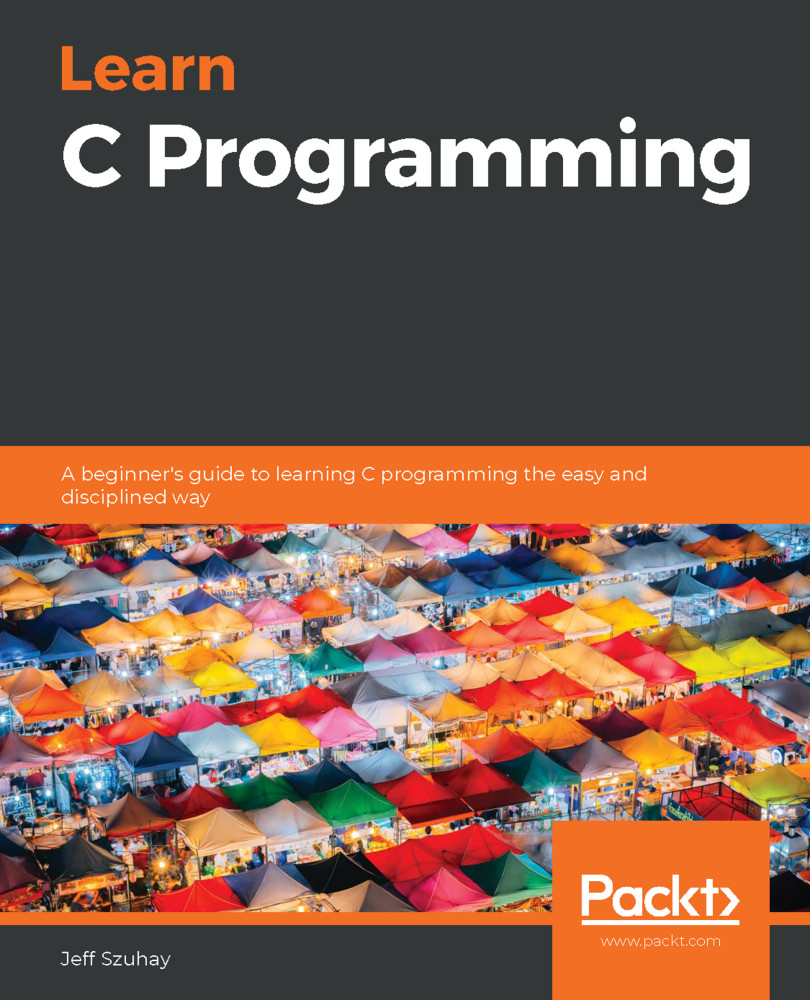A structure can contain components of any type, even other structures.
Let's say we want to represent a hand of five cards. We'll define a structure that contains five struct Cards, as follows:
struct Hand {
int cardsDealt;
struct Card c1;
struct Card c2;
struct Card c3;
struct Card c4;
struct Card c5;
}
We could have just as easily written this as follows:
struct Hand {
int cardsDealt;
struct Card c1, c2, c3, c4, c5;
];
Both definitions are functionally identical. Do you see how this is similar to how variables of the same type were declared in Chapter 4, Using Variables and Assignment? As you work with C more and more, you will begin to see patterns being used repeatedly throughout the language. These repeated patterns make the language concise, consistent (for the most part), and easier to understand.
As we shall see in Chapter 16, Creating and Using More Complex Structures, there is a...


